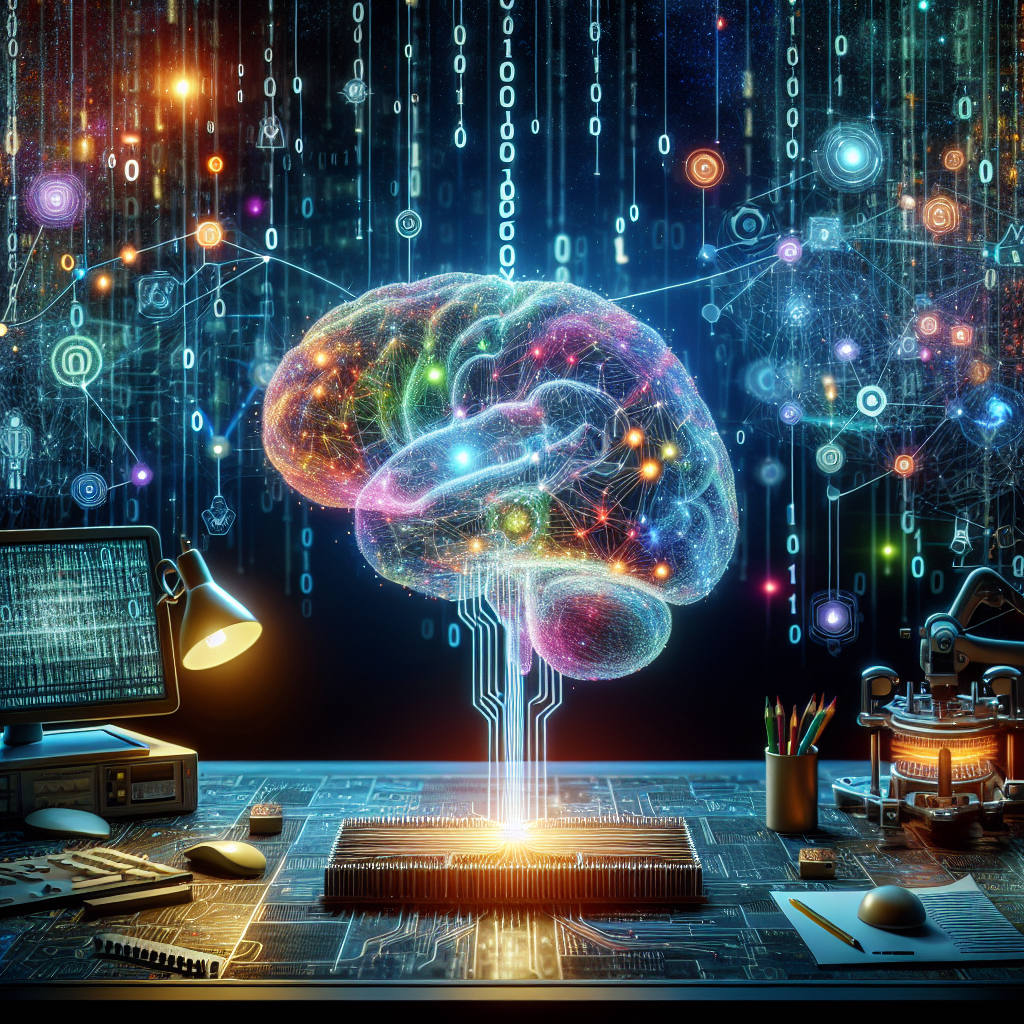Artificial intelligence (AI) has been making significant strides in recent years, particularly in the realm of creativity. From writing poetry to composing music to generating visual art, AI is now capable of producing creative works that rival those of human creators. But what exactly is the psychology behind AI-generated creativity? How does the human mind perceive and respond to art created by machines? In this article, we will explore the fascinating intersection of psychology and AI-generated creativity.
The Psychology of AI-Generated Creativity
To understand the psychology of AI-generated creativity, it is important to first examine how creativity is defined and understood in the context of artificial intelligence. Creativity is typically associated with the ability to produce novel and valuable ideas, solutions, or works of art. Traditionally, creativity has been seen as a uniquely human trait, stemming from our capacity for complex thought, imagination, and emotional expression. However, AI has challenged this notion by demonstrating that machines can also exhibit creative behaviors.
One of the key components of creativity is the ability to generate original ideas and solutions. AI systems are able to achieve this by using algorithms to analyze vast amounts of data and identify patterns and connections that humans may not have considered. This process, known as machine learning, allows AI to generate new and innovative ideas that can be applied to various creative tasks.
Another important aspect of creativity is the ability to make connections between seemingly unrelated concepts, a process known as divergent thinking. AI systems are capable of performing this task by using neural networks to simulate the complex patterns of connectivity found in the human brain. By generating and exploring a wide range of possibilities, AI can produce creative outputs that are surprising and unexpected.
The psychology of AI-generated creativity also involves examining how humans perceive and respond to art created by machines. Research has shown that people tend to view AI-generated art differently depending on their awareness of its origins. When participants are told that a piece of art was created by AI, they may be more critical of its quality and authenticity. However, when the same piece of art is presented without this information, participants are more likely to appreciate its creativity and originality.
This phenomenon, known as the “AI effect,” highlights the complex relationship between human perception and AI-generated creativity. People may have preconceived notions about the limitations of AI and the capabilities of human creators, which can influence their reactions to AI-generated art. Understanding these cognitive biases is crucial for developing AI systems that can effectively engage and inspire audiences.
FAQs
Q: Can AI truly be creative?
A: While AI systems can generate novel and valuable ideas, the debate over whether AI can exhibit true creativity is ongoing. Some argue that creativity is a uniquely human trait that involves emotional expression and subjective experience, which AI lacks. However, AI has demonstrated the ability to produce creative works that rival those of human creators, suggesting that machines can indeed be creative in their own way.
Q: How does AI-generated art compare to human-created art?
A: The quality and style of AI-generated art can vary depending on the algorithms and data used to create it. While some AI-generated art may be indistinguishable from human-created art, other pieces may lack the emotional depth and complexity that human creators bring to their work. Ultimately, the comparison between AI-generated art and human-created art is subjective and open to interpretation.
Q: How can AI-generated creativity be used in the arts and entertainment industry?
A: AI-generated creativity has the potential to revolutionize the arts and entertainment industry by streamlining production processes, generating new ideas and concepts, and engaging audiences in innovative ways. From music composition to film editing to visual art, AI can enhance and augment human creativity, leading to new and exciting possibilities for artistic expression.
Q: What are the ethical implications of AI-generated creativity?
A: The use of AI in creative fields raises important ethical considerations, such as intellectual property rights, transparency in art creation, and the potential for bias in algorithmic decision-making. It is crucial for artists, technologists, and policymakers to address these issues and ensure that AI-generated creativity is used responsibly and ethically.
In conclusion, the psychology of AI-generated creativity is a complex and multifaceted field that raises fascinating questions about the nature of creativity, human perception, and the role of technology in artistic expression. By exploring the cognitive processes involved in AI-generated creativity and addressing common misconceptions through FAQs, we can gain a deeper understanding of the potential and limitations of AI in the creative domain. As AI continues to evolve and innovate, it is essential for researchers, creators, and audiences to engage with these questions and explore the possibilities of machine-generated art.

